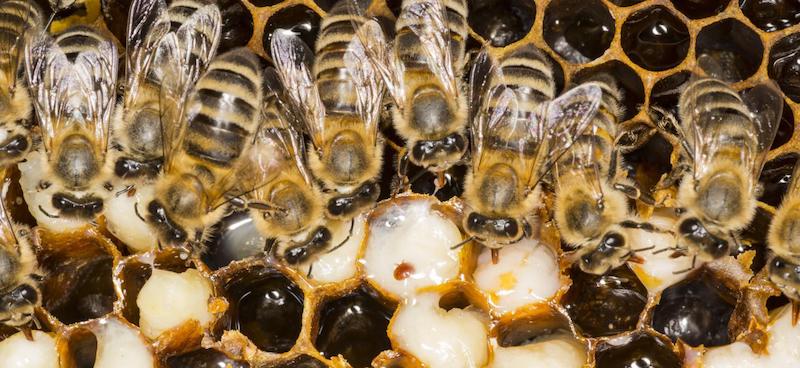Varroa is the first problem of bees before beekeeping practices, food problems (nectar and pollen), and chemicals used in agriculture.
In order to fight against this plague, several possibilities are available to the beekeeper to help his bees.
The most common is the use of insecticides to kill varroa mites. We only have a few molecules or acids, but the varroa mites adapt and become more and more resistant to the treatment. It is, therefore, necessary to increase the doses and the number of treatments.
Other parts consist of breaking the reproductive cycle of the Varroa by stopping the queen laying naturally in winter or by caging the queen. This makes chemical treatments more effective because all varroa mites are on the bees (phoretic), and none are hidden in the brood!
Brood related traits – VSH
Another way is to select the bees so that they fight and control the number of varroa mites themselves.
This is the classic reproduction of the varroa mite. The queen bee lays an egg. The egg develops into a larva, which is fed by a worker bee. Once the larva is almost fully grown, a varroa mite enters the cell. Shortly afterward, the cell is closed by a worker bee. The Varroa can now begin to reproduce by laying an egg that will produce a male first, and then laying the next eggs that will produce females. The Varroa founder female then makes a hole in the cuticle of the bee larva and collects the hemolymph (=blood) there. The same hole is also used for feeding her offspring. The newly born female Varroa mates with the male Varroa and leaves the cell once the bee nymph is born.
The VSH (Varroa Sensitive Hygiene) trait
VSH is a bee trait that consists of the cleansing of Varroa infected cells. This cleaning ability is broken down into two stages: a stage of detection of the affected larva and a stage of the evacuation of the larva. Thus there would be bees capable of detecting and partially unsealing the infected cell, and others that would unseal and remove the larva from the cell. Thus the cleaning character would, in fact, be the combination of the “detection” character and the “removal” character.
This VSH behavior has been shown to be very effective. If the infested brood from a non-HSV colony is transferred to a VSH colony, most Varroa mites (> 90%) are detected and killed.

